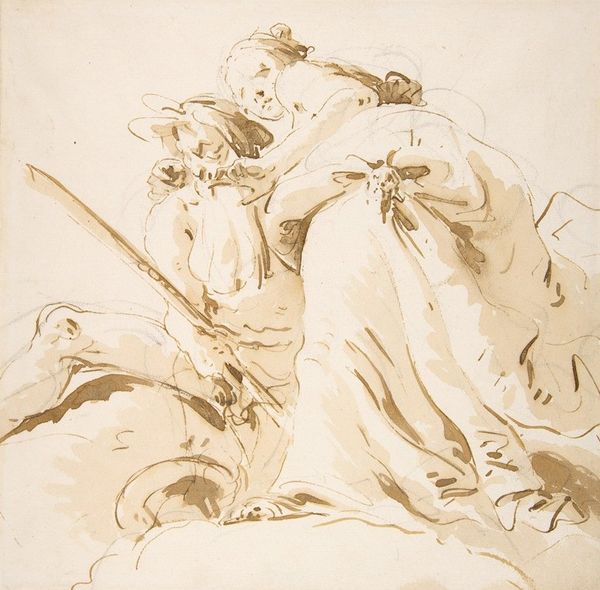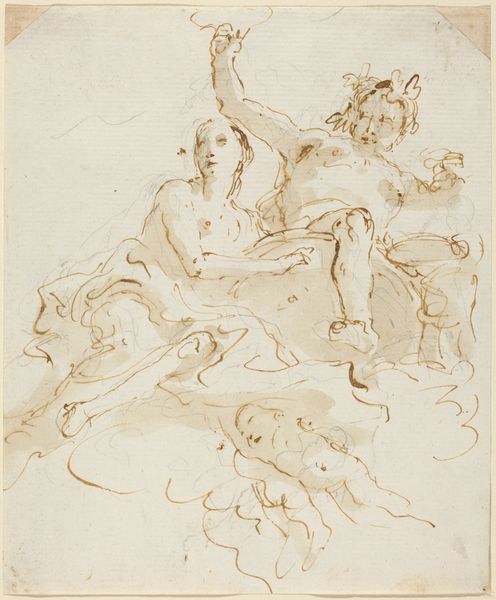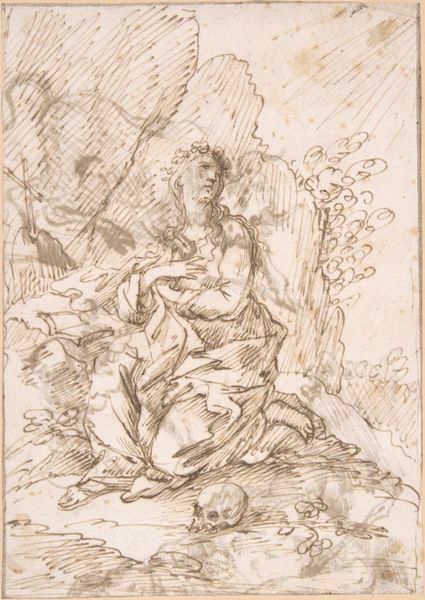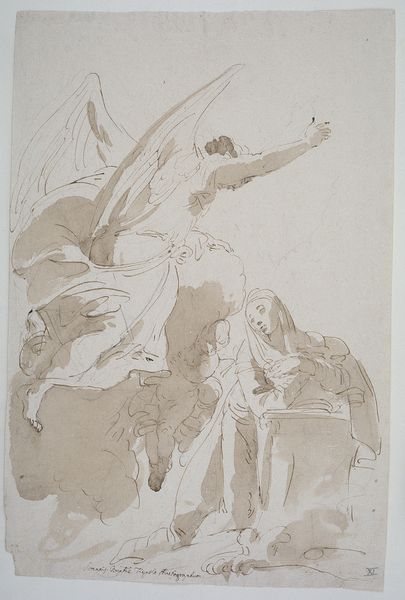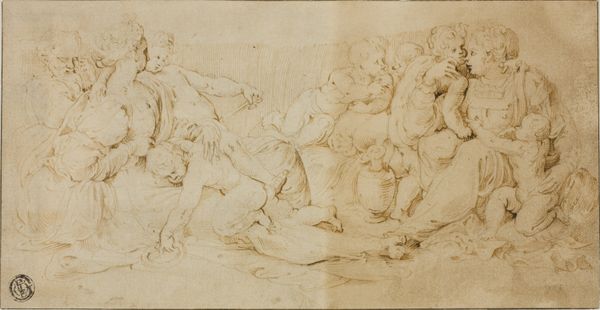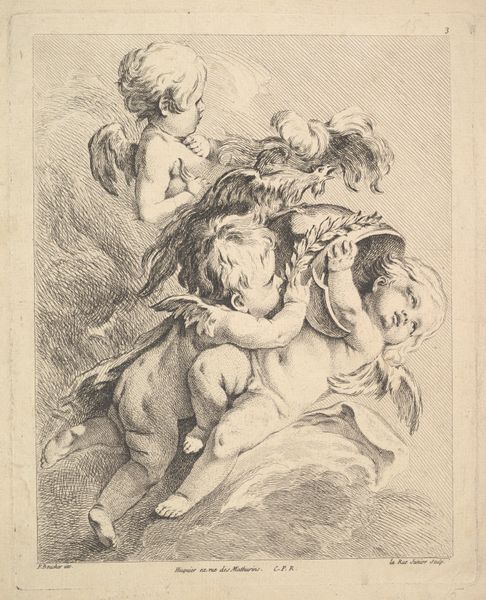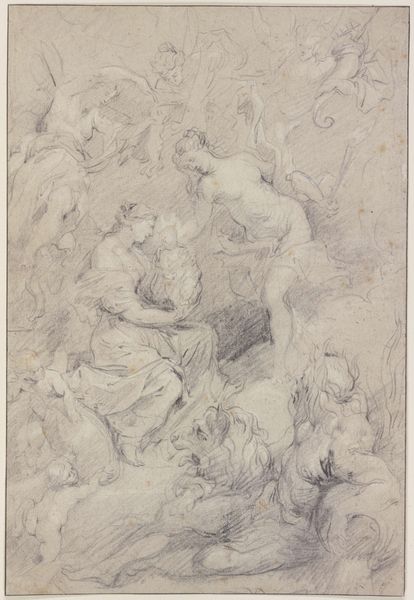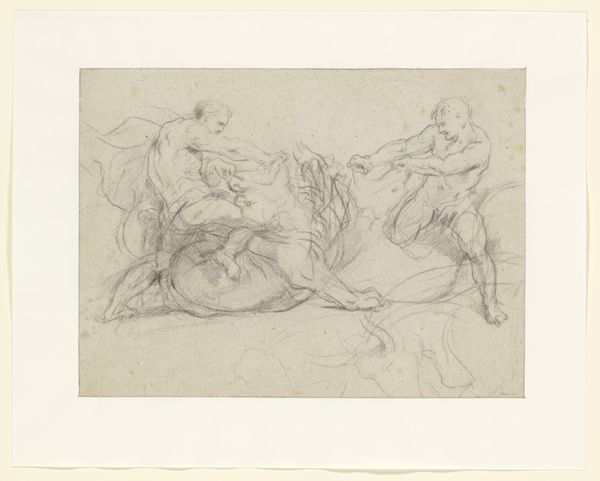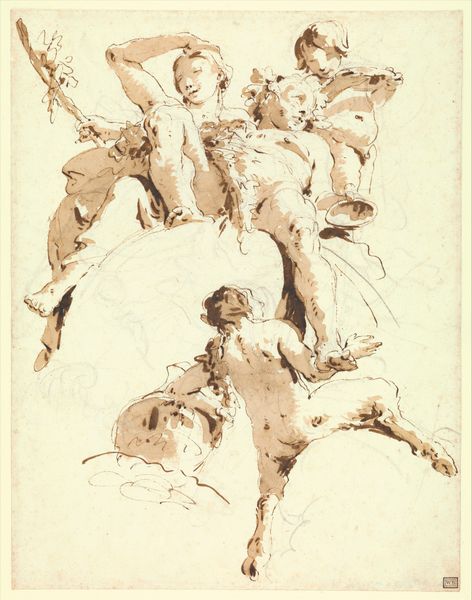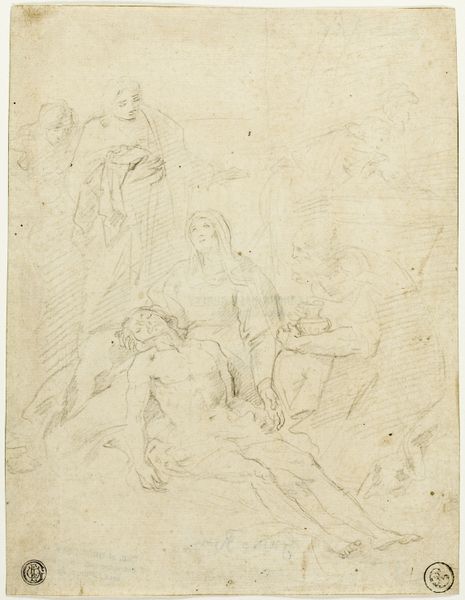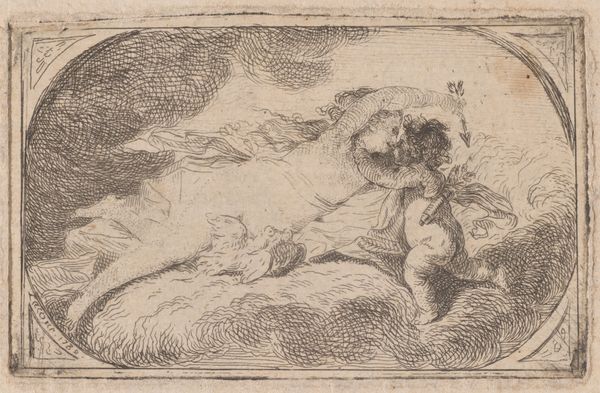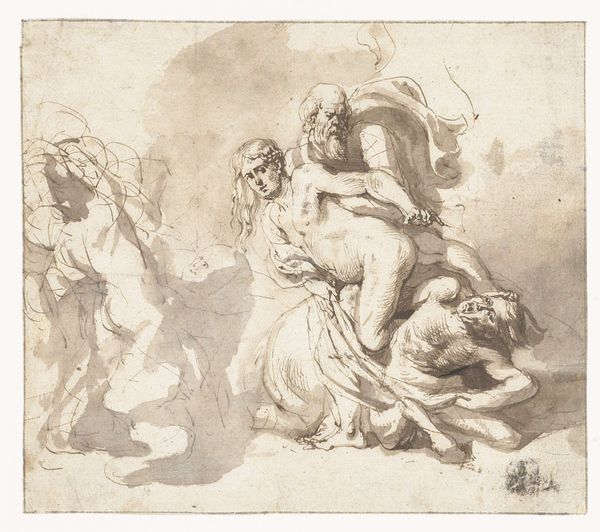
Mercury Appearing to a Marine Deity and a Nymph 1696 - 1770
0:00
0:00
drawing, print, ink
#
drawing
#
allegory
#
baroque
#
ink painting
# print
#
ink
#
pencil drawing
#
history-painting
#
nude
#
watercolor
Dimensions: 10 3/16 x 8 3/8in. (25.9 x 21.3cm)
Copyright: Public Domain
Curator: Allow me to introduce Giovanni Battista Tiepolo's "Mercury Appearing to a Marine Deity and a Nymph," likely created between 1696 and 1770. It’s executed in ink, primarily, showcasing the artist's skill as a draughtsman. Editor: The ink wash creates a soft, dreamlike atmosphere. Notice the layering, it really gives the composition depth. Though unfinished, the drawing exudes dynamism through these ethereal figures. Curator: Indeed, Tiepolo's preparatory sketches often feel quite complete. What interpretations arise for you when observing this composition? Editor: My eye is drawn to Mercury, who comes across almost urgent—a messenger interrupting the languid ease of the marine deity and nymph below. Winged helmet askew and gesturing wildly with his staff...The staff, known as the caduceus, a traditional emblem of commerce and negotiation— perhaps hinting at transactions between the earthly and divine. What kind of conversation could we suppose is occurring, based on these characters and their established iconographies? Curator: I am intrigued by the implied interaction, especially framed by Tiepolo's masterful use of light and shadow. Consider how he contrasts the heavily worked foreground with the lightly sketched Mercury. These aesthetic decisions push our gaze, constructing narrative interest with a carefully calibrated composition. We find ourselves drawn toward narrative resolution via these formal choices, a method often deployed in history paintings. Editor: And the marine deity clasps onto what? The nymph appears passive but note the intensity of the marine deity’s focus. Do they see Mercury, or does this interruption come from within? It raises questions regarding the nature of perception and reception. Curator: A pertinent question indeed. In Tiepolo's time, the rising popularity of Neoclassicism would place a similar emphasis on rational, self-evident interpretations. In contrast, he continues to use asymmetry, complex perspective, and layered iconography that Baroque excels in. His aesthetic aligns the work squarely within a late-Baroque tradition even while presaging something like Rococo lightness in the sweeping gestures that characterize each figure’s position within this work's physical space. Editor: A truly compelling point. We can see a tension playing out at multiple levels here, between forms, ideas, artistic movements...I think I understand a little better how to situate the artist between what came before him and what would eventually eclipse the fashions of his time. Thank you. Curator: An art history of stylistic conflict written on a single sheet of paper. Remarkable.
Comments
No comments
Be the first to comment and join the conversation on the ultimate creative platform.
